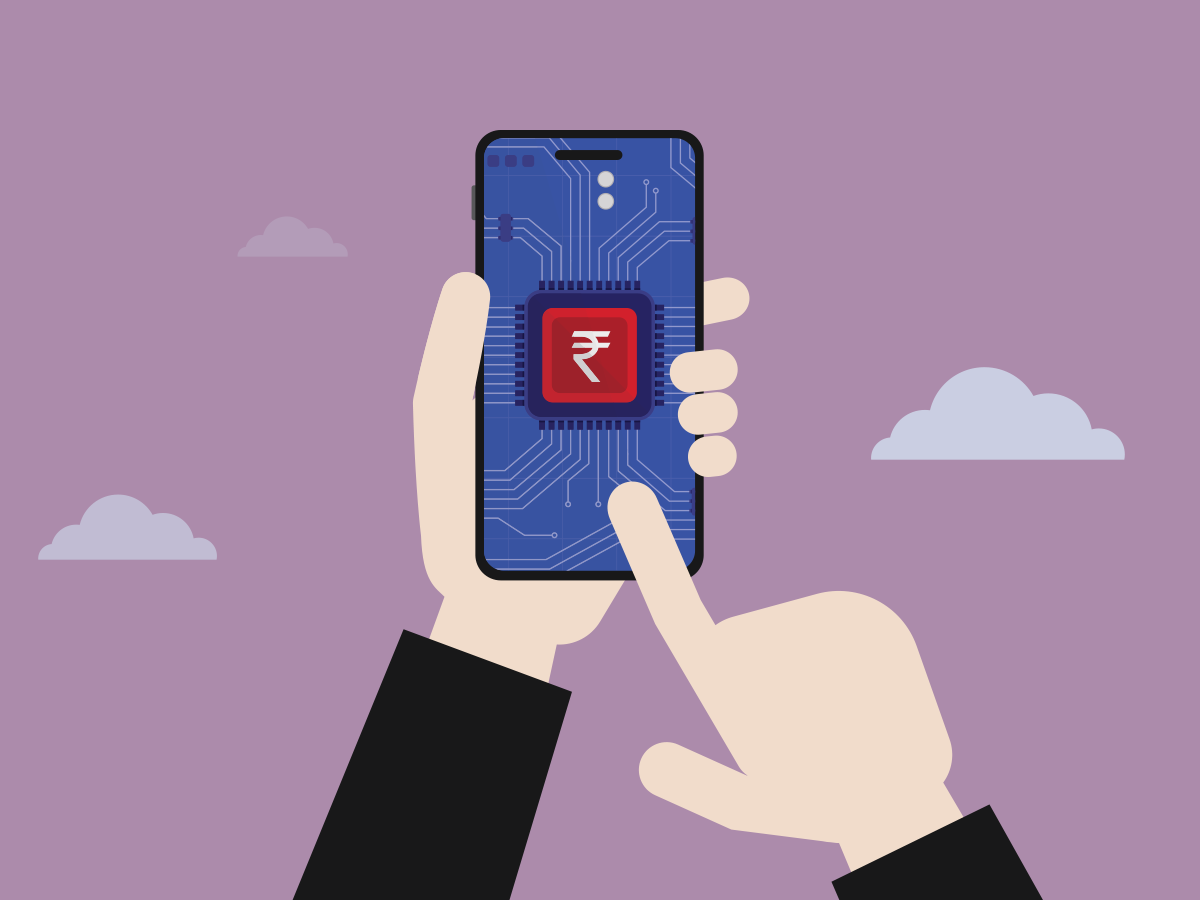Digital Rupee offline transactions: The RBI has announced that its Central Bank Digital Currency (CBDC) can now be programmed and used offline. Soon, users will be able to conduct offline transactions, even in areas with limited internet connectivity.
During the recent Monetary Policy Committee review meeting on February 8, the RBI governor Shaktikanta Das said, “The CBDC Retail (CBDC-R) pilot currently enables Person to Person (P2P) and Person to Merchant (P2M) transactions.It is now proposed to enable additional functionalities of programmability and offline capability in CBDC retail payments. Programmability will facilitate transactions for specific/targeted purposes, while offline functionality will enable these transactions in areas with poor or limited internet connectivity.”
ALSO READ | RBI MPC meeting: Why repo rate was kept unchanged at 6.5% – RBI governor Shaktikanta Das explains
This move comes as part of the RBI’s initiative to enhance accessibility and usability of the CBDC-R. The offline functionality will enable transactions in regions where internet access is scarce or unavailable. Various offline solutions, both proximity- and non-proximity-based, will be evaluated across hilly, rural, and urban landscapes to ensure widespread applicability.
What is CBDC?
CBDC stands for Central Bank Digital Currency, issued by the RBI as legal tender. It differs from traditional paper or polymer currency, existing as electronic sovereign currency. CBDCs appear as liabilities on a central bank’s balance sheet and can be customized for specific needs, states an ET report. They should be exchangeable at the same value as cash.
ALSO READ | Loan borrowers take note! Now, know all-inclusive interest cost for your loan, RBI announces new measures for transparency
How can CBDCs users benefit over a digital payment system?
According to the RBI website, payments made with CBDCs are final, reducing settlement risks in the financial system. Imagine using a UPI system where CBDC is exchanged instead of bank balances—it’s like handing over cash, eliminating the need for interbank settlements. CBDCs could also enhance real-time and cost-effective globalization of payment systems.
For instance, an Indian importer could pay an American exporter in digital dollars instantly, without intermediaries. This transaction would be as final as if cash were exchanged, without relying on the US Federal Reserve system for settlement. Time zone differences would no longer affect currency settlements, mitigating ‘Herstatt‘ risk.
During the recent Monetary Policy Committee review meeting on February 8, the RBI governor Shaktikanta Das said, “The CBDC Retail (CBDC-R) pilot currently enables Person to Person (P2P) and Person to Merchant (P2M) transactions.It is now proposed to enable additional functionalities of programmability and offline capability in CBDC retail payments. Programmability will facilitate transactions for specific/targeted purposes, while offline functionality will enable these transactions in areas with poor or limited internet connectivity.”
ALSO READ | RBI MPC meeting: Why repo rate was kept unchanged at 6.5% – RBI governor Shaktikanta Das explains
This move comes as part of the RBI’s initiative to enhance accessibility and usability of the CBDC-R. The offline functionality will enable transactions in regions where internet access is scarce or unavailable. Various offline solutions, both proximity- and non-proximity-based, will be evaluated across hilly, rural, and urban landscapes to ensure widespread applicability.
What is CBDC?
CBDC stands for Central Bank Digital Currency, issued by the RBI as legal tender. It differs from traditional paper or polymer currency, existing as electronic sovereign currency. CBDCs appear as liabilities on a central bank’s balance sheet and can be customized for specific needs, states an ET report. They should be exchangeable at the same value as cash.
ALSO READ | Loan borrowers take note! Now, know all-inclusive interest cost for your loan, RBI announces new measures for transparency
How can CBDCs users benefit over a digital payment system?
According to the RBI website, payments made with CBDCs are final, reducing settlement risks in the financial system. Imagine using a UPI system where CBDC is exchanged instead of bank balances—it’s like handing over cash, eliminating the need for interbank settlements. CBDCs could also enhance real-time and cost-effective globalization of payment systems.
For instance, an Indian importer could pay an American exporter in digital dollars instantly, without intermediaries. This transaction would be as final as if cash were exchanged, without relying on the US Federal Reserve system for settlement. Time zone differences would no longer affect currency settlements, mitigating ‘Herstatt‘ risk.


